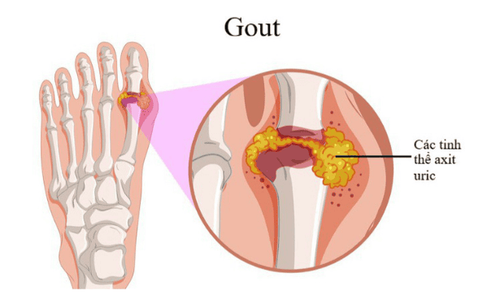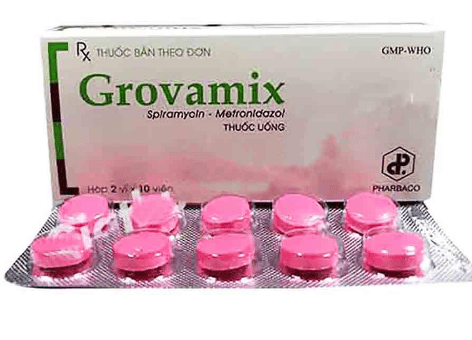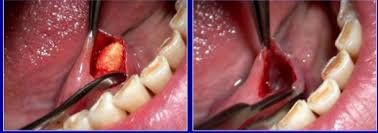This is an automatically translated article.
The article was professionally consulted by Doctor of Dentistry - Jaw - Face - Department of Medical Examination & Internal Medicine - Vinmec Hai Phong International General Hospital.
Submandibular salivary gland inflammation due to stones is an inflammatory condition of the salivary glands. The disease causes discomfort that affects quality of life. Early detection by removing stones will treat thoroughly and preserve the submandibular gland.
1.Inflammation of the salivary glands due to stones is what?
Submandibular salivary gland inflammation due to stones is an inflammation and damage to the salivary glands caused by stones in the gland or submandibular duct.
Salivary gland stones under the jaw are usually small in size, blocking the flow of saliva to the mouth, causing pain and discomfort. In case of large stones causing blockage of ducts, leading to ductal inflammation, gland abscesses, the most severe is affecting the facial nerves causing mouth distortion, numbness,...
Submandibular gland stones form when deposits of substances in the saliva that accumulate in the lumen of the ducts or salivary glands.
2.Risk factors for submandibular salivary gland inflammation due to stones

Adult male Cancer patient who has had radiation therapy to the head or neck area. Injuries to the maxillofacial and oral regions. Use of anticholinergics, antihistamines (antiallergics), blood pressure medications, psychiatric drugs that affect salivary function Gout or Sjogren's syndrome Drink less water...
3.Symptoms of salivary gland stones?
Salivary stones usually do not cause symptoms when they are in their formation stage. When the stone has a large irritation or the gland is completely blocked by the stone, it can cause the following symptoms:
3.1 Systemic symptoms High fever in case of acute inflammation or abscess Swelling of the ipsilateral submandibular lymph nodes 3.2 Clinical symptoms Swollen submandibular gland due to gallstones blocking saliva occurring during meals, stasis in the gland. When the saliva is released, the swelling of the gland is gone and the pain is gone.

Swelling under the jaw: The border is clear, if in the acute phase, there is swelling, heat, redness, pain to touch. If it is not an exacerbation, the skin on the swollen area will be normal, firm, and less painful. Pain or swelling under the jaw 1 or 2 in front of the ears, pain increases when eating. In the mouth, the Wharton's duct is red and swollen, and stones can be seen in the ductal area. When stroking along the duct toward the duct mouth, pus may be oozing out. 3.3 Paraclinical symptoms Routine X-ray: Stones can be seen in the gland or duct. CT Scanner: See the position, size of the stone, hypertrophy of the submandibular gland. Contrast submandibular gland: There is a typical pearl chain image with features of large, irregularly dilated Wharton tubes.
4. Complications of salivary gland stones
Inflammation of the floor of the mouth causes severe pain in the mouth, spreading to the ears, affecting eating, chewing, swallowing, limiting opening of the mouth, affecting sleep because the patient aches all night. May become chronic inflammation. Sometimes, the infection spreads to the floor of the mouth, the prognosis is very severe. There are cases where the inflammatory organization forms an abscess, causing damage to the nerves that govern the activities of the facial muscles, causing facial paralysis.
5. Treatment of salivary gland stones

5.1 Principles of treatment Antibiotics, anti-inflammatory, pain relief For small stones, massaging the area under the jaw can bring out the stones. Submandibular gland stone removal surgery and gland-conserving treatment or gland removal according to indications 5.2 Specific treatment Stone-removal surgery, gland-conserving treatment or complete glandectomy depending on the case, such as The following:
Gallstone surgery and gland-sparing treatment are indicated in the case of ductal stones and non-fibrotic gland inflammation. Surgery to remove stones and remove the submandibular gland is indicated for people with recurrent gland stones or irreversible, fibrotic damage to the salivary glands. Currently, there is a laparoscopic surgery method with many advantages such as:
Less risk of facial nerve damage Less bleeding Preservation of salivary glands and high salivary ducts Quick recovery thus shortening time Hospitalization No incision and no scars, quick recovery Inflammation of the submandibular gland caused by stones is treated early by removing the ductal stone, the submandibular gland will be preserved with good treatment results. In case of late stone removal, the submandibular gland is prone to chronic inflammation and fibrosis, leading to the need to remove the gland. Therefore, if you suspect that salivary gland inflammation due to stones should be examined and treated early.
Please dial HOTLINE for more information or register for an appointment HERE. Download MyVinmec app to make appointments faster and to manage your bookings easily.













